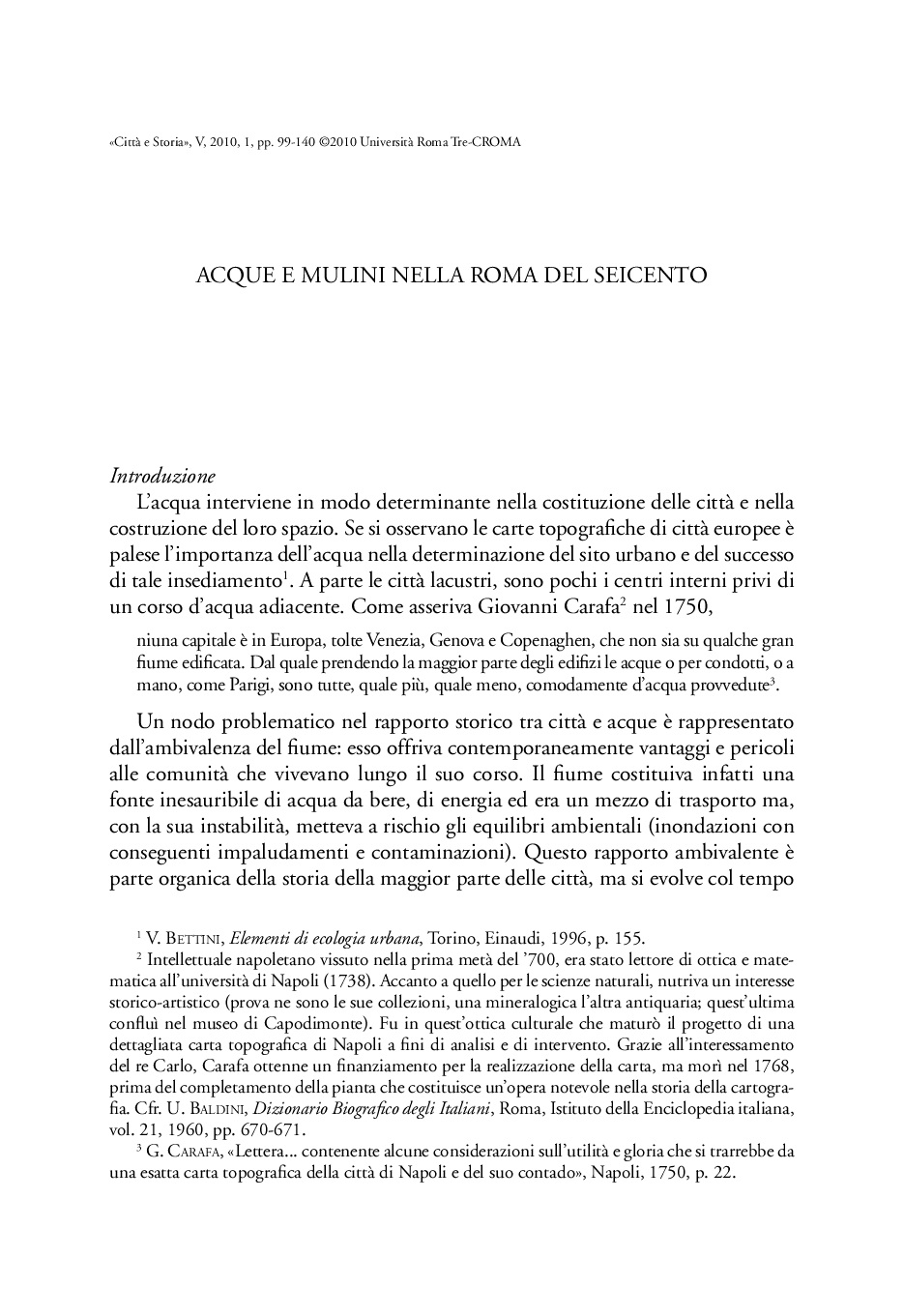Indice dei fascicoli
CITTÀ & STORIA » 2010/1 » Studi di storiografia urbana
ISSN 1828-6364
Bevilacqua Irene
Acque e mulini nella Roma del Seicento
pp.99-140, DOI 10.17426/34249
Articoli
Abstract: This essay tries to adopt a new perspective in the analysis of Rome, focusing on its relations with waters during the Seicento. Studying the urban relations with aqueduct–waters, the river and millrace underlines not only papal politics and scientific knowledge of that age, but also a new image of Rome: in a leading position among other European capital cities for its water supply, in a constant search for solutions to floods, able to create an alternative milling system provided with advanced technology. If we consider the wide water distribution and the surviving of a rough sewerage, Baroque Rome was characterized by two of the essential elements that define “modern” a capital.
The milling use project for Paola water transpired even before the beginning of waterworks jobs. Through the aqueduct, pope Paolo V aimed to solve more problems at once: the water supply for the right bank of the city, the embellishment of Vatican and other quarters, the overcoming of molinary (and so grain) impasse at every Tiber flooding, getting a considerable reduction for bread rate. As a matter of fact, the principal promoter of this project, the architect Targone, presented his plain to the Congregation of Macinato, as archives records testify. Unfortunately, the reasons why the project was not carried out are still unknown. But the mills were realized nearly seventy years later, under the pontificate of Innocenzo XI, not without many difficulties, largely investigated in this study.

Referenze
- download: n.d.
- Url: http://archivio.centroricercheroma.it/?contenuto=indice-dei-fascicoli&idarticolo=931
- DOI: 10.17426/34249
- citazione: I. Bevilacqua, Acque e mulini nella Roma del Seicento, "Città & Storia", V/1, pp.99-140, DOI: 10.17426/34249

